The Danube River has played a major part in shaping Europe’s history and following the Danube will take you on a fascinating journey into the past. Kings and conquerors used the river as a pathway to new horizons and to invade other Danube river cities. Celts, Romans and Emperor Charles the Great capture foreign lands. Then there’s King Ludwig I, the Wittelsbachs and the Habsburgs, who have all left their mark on the Danube.
One of the main reasons, the Danube River is perfect for cruising is that it’s a waterway that connects more capital cities compared to any other rivers. That’s why European river cruises are a popular way of exploring Danube river cities and discovering countries that were once hidden behind the iron curtain.
Flowing from the Black Forest to the Black Sea, the second-longest river in Europe flows past larger European cities like Vienna, Budapest, Belgrade and Bratislava. In other places, dense forest covers the cliffs in a breathtaking palette of autumn shades that tumble all the way down to the grey-green river.
Contents
Danube River Cities
There are several ways to explore the cities along the Danube River, which passes through 10 countries in Europe.
Some cities and off-the-beaten-track towns are difficult to get to by other means of transport, which makes cruising a great way to explore.
At some destinations, the ports are located so close to the towns that ships are able to dock a short stroll to the sights.
While at other ports, the Danube river is a means of accessing cities close by through a short road trip through the countryside. Here’s an A to Z of Danube River cities in Europe.
Danube River Cities in Austria
1- Vienna (Austria)
Vienna is the capital of Austria and the country’s largest city. Population: 1.868 million
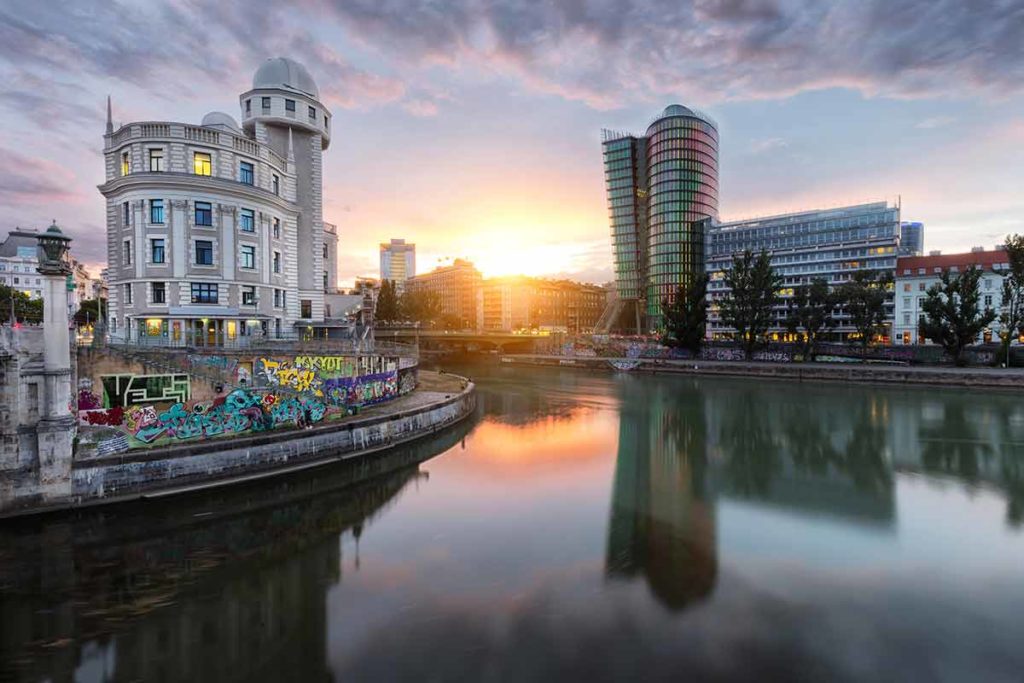
A beautiful imperial city with stunning UNESCO World Heritage-listed buildings, Vienna is the city of art, music and Mozart.
It’s a fabulous city for culture and history, with enough museums and galleries to spend weeks admiring the best works by Egon Schiele, Gustav Klimt and other famous artists.
Vienna is also known for its fine Baroque architecture around the Ringstraße as well as many impressive historical palaces, such as Belvedere Palace, which is now the Österreichische Galerie (Austrian Gallery).
The gallery has a massive collection of art by Klimt and Schiele.
The most beautiful palaces to visit are Schloss Schönbrunn, which used to be the summer home of the royal family, and Hofburg where the Habsburg Emperors ruled from for more than six centuries.
The Habsburg dynasty influenced Europe for over six centuries (from 1276 to 1918) leaving a legacy of aristocratic palaces, imposing cathedrals, art and music.
It was during that time that the talents of some of the world’s greatest composers like Beethoven, Mozart and Strauss blossomed.
The tentacles of the mighty Habsburg Empire reached as far as Burgundy, Spain, Bohemia, Croatia, Serbia and Hungary.
Hofburg has fine furniture, tapestries and crystal chandeliers on display in the opulent apartments of Emperor Franz Joseph I and Empress Elisabeth.
Of are 1441 rooms in Schloss Schonbrunn, only 40 are open to the public. The summer residence of the royal family was architecturally inspired by France’s Palace of Versailles.
Empress Maria Theresa threw lavish banquets here, six-year-old Mozart performed in the Hall of Mirrors and Napoleon Bonaparte occupied the palace between 1805 and 1809.
Also a city with some of Europe’s best cafes restaurants, it’s not surprising that cruise ships often dock in Vienna.
A great way to experience the Danube and see Vienna is to go on a lunch cruise along the Danube canal.
2- Linz (Austria)
Linz is Austria’s third-largest city. Population: 203,012
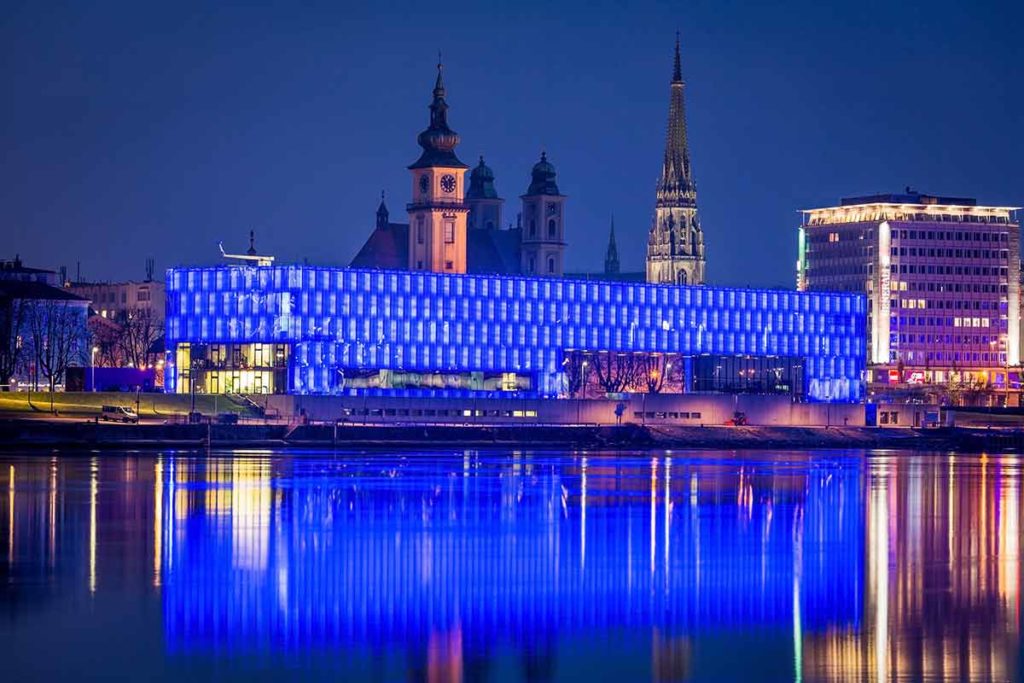
30km from the border of the Czech Republic, Linz is the largest city in Upper Austria, a European Capital of Culture and member of the UNESCO Creative Cities (UCCN) Media Arts network.
Both contemporary and classical art and architecture continue to thrive in Linz, with the futuristic Ars Electronica Center on one bank of the Danube and the contemporary Lentos Kuntmuseum along with grand 19th and 20th-century architecture on the other.
At Ars Electronica, discover how technology is changing the world, which is a total contrast to wandering past historic architecture as you explore the Old City’s cobblestone streets.
Learn how scientists are programming robots, training driverless cars and using 3D printers. Would you like to learn how to process your DNA using gene scissors?
Linz is a few hour’s driving away from national parks and four UNESCO World Heritage Sites.
A great way to see the Danube while visiting Linz is to go to the Schlögener Schlinge, which is about 45 minutes from Linz, for a view of where the Danube doubles back to flow in the direction from which it came.
For more amazing European Landmarks, read:
- 30 Spain Landmarks
- 20 Switzerland Landmarks
- 22 Germany Landmarks
- 35 London Landmarks
- 30 France Landmarks
- 20 Italy Landmarks
- 20 Greece Landmarks
- 20 Russia Landmarks
- 20 Scotland Landmarks
- 20 Ireland Landmarks
- 21 Wales Landmarks
- 20 Turkey Landmarks
- 20 England Landmarks
- 20 Hungary Landmarks
- 21 Romania Landmarks
- 20 Ukraine Landmarks
- 20 Athens Landmarks
- 20 Rome Landmarks
- 20 England Landmarks
- 20 Portugal Landmarks
- 20 Poland Landmarks
- 20 Iceland Landmarks
- 20 Bulgaria Landmarks
- 21 Croatia Landmarks
- 20 Bulgaria Landmarks
- 20 Austria Landmarks
- 21 Finland Landmarks
- 20 Sweden Landmarks
- 20 Denmark Landmarks
- 20 Belgium Landmarks
- 20 Netherlands Landmarks
- 20 Barcelona Landmarks
- 21 Czech Republic Landmarks
- 20 Landmarks in Paris
- 20 Landmarks in Liverpool
- 10 Istanbul Landmarks
Danube River Cities in Bulgaria
3- Ruse (Bulgaria)
Ruse is the fifth-largest city in Bulgaria. Population: 223,489
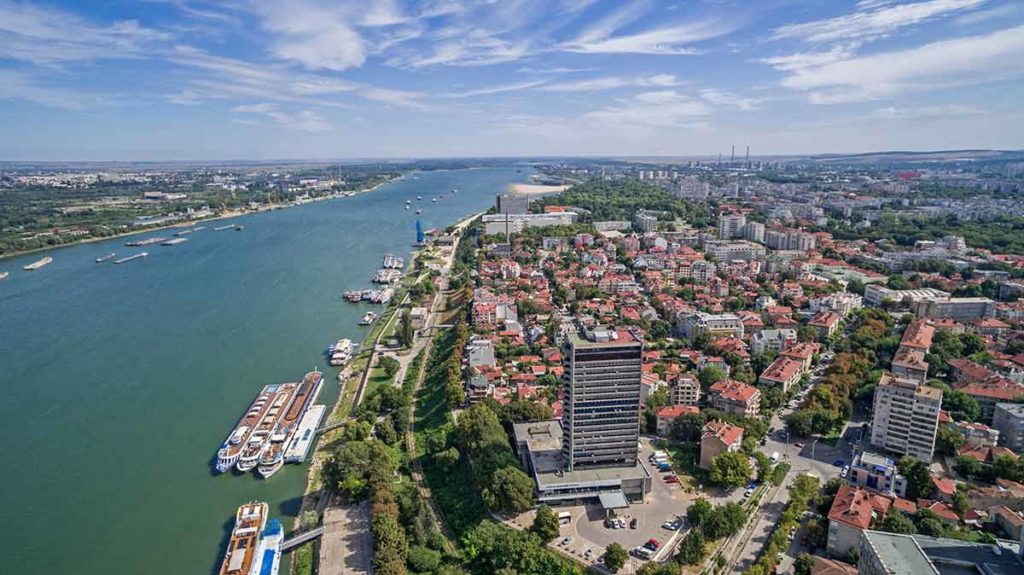
One of the most vibrant Danube river cities in Bulgaria, Ruse is connected to Romania by the Danube Bridge.
Ruse is a Danube river city with lovely architecture and most of Ruse’s designs is a nod to the Viennese architectural style.
While in Ruse, visit the Basarbovo Monastery and Ivanovo Rock-Hewn Churches for a peek into Bulgarian Orthodox Christianity.
Ruse on the Danube’s right bank in the northeastern part of the country.
4- Nikopol (Bulgaria)
Nikopol is on the border of Romania. Population: 7925
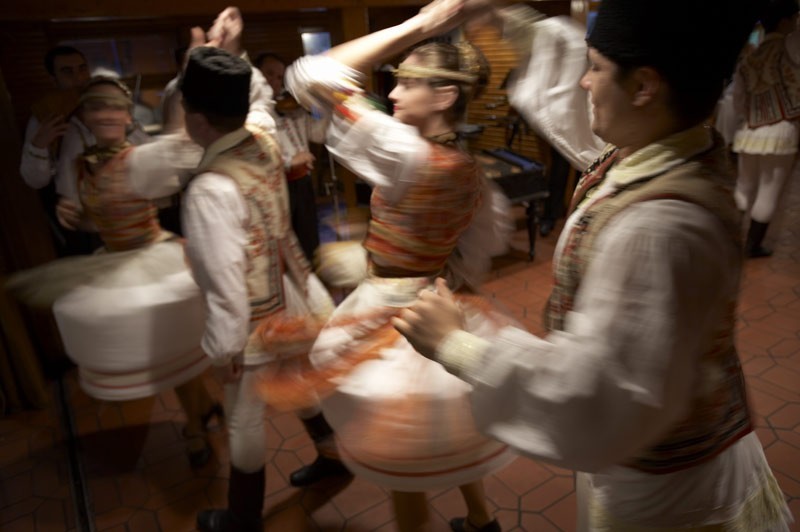
Located on the right bank of the Danube River, Nikopol is the smallest town in Bulgaria along the river.
It’s 229 km from Sofia and has a few historic landmarks, such as the 13th-century St Peter and Pavel Church, a 2nd-century Roman drinking fountain and the ruins of the Shishman fortress used in the defence of the last Bulgarian Tsar against Turkish invaders.
There’s also a monument in memory of Russian soldiers who lost their lives during the Russian-Turkish War of Liberation.
5- Vidin (Bulgaria)
Vidin is a port in Bulgaria. Population: 88,867.
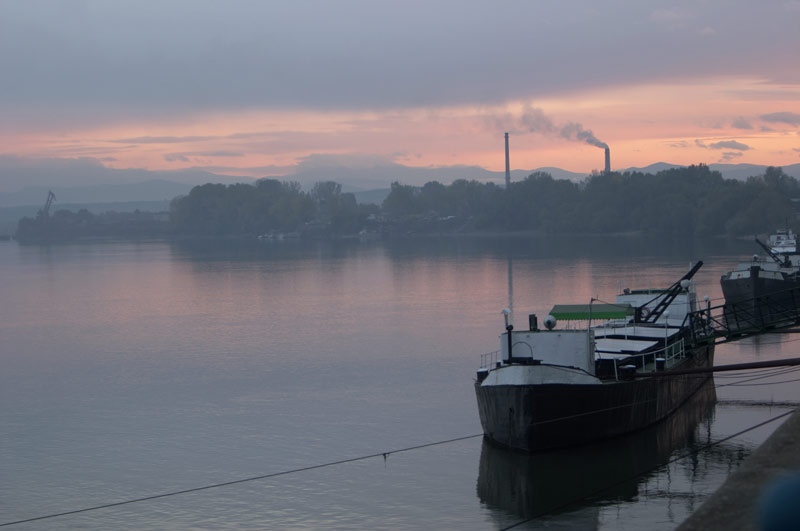
Vidin’s narrow streets hide thousands of years of Roman, Byzantine, Ottoman and Bulgarian culture.
This rich history has left Vidin with a potpourri of architectural styles and fine churches.
Visit the 14th-century Bada Vida Fortress, where you might get the opportunity to see a local theatre group bring the story of the Ottoman conquest of the fort to life with a Bulgarian play.
Danube River Cities in Croatia
6- Ilok (Croatia)
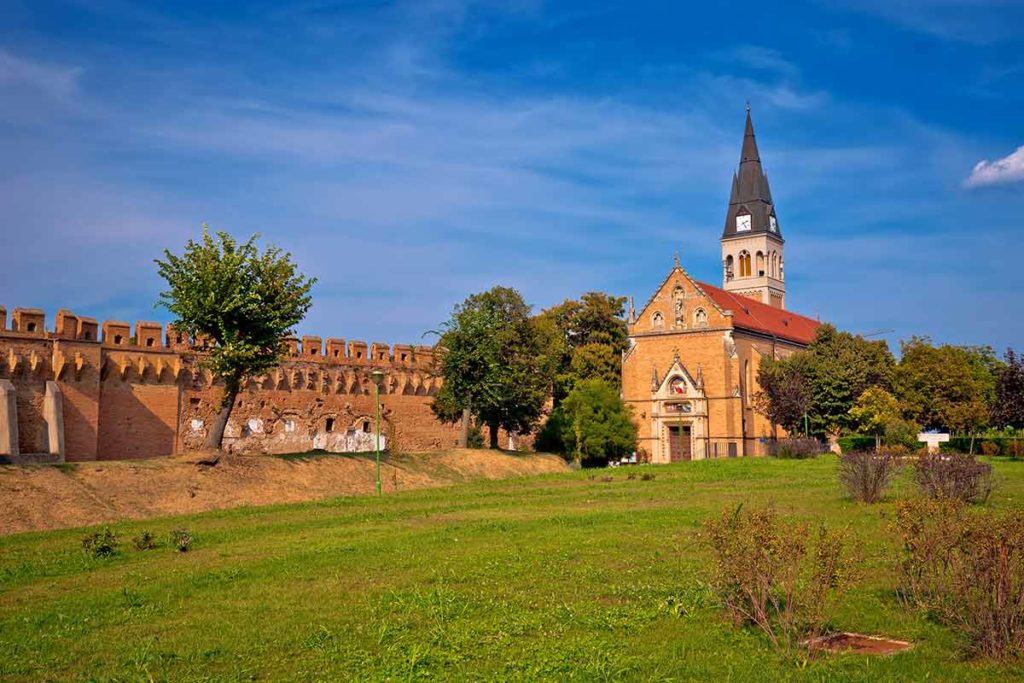
Ilok is a town in the region of Syrmia, with views of the Danube River. Population: 6,767
Ilok is a tidy town with homes with tidy gardens, dormer windows, brown-tiled roofs, timber sheds stacked high with firewood, neatly pruned waist-high green hedges and tall shady trees.
St John Capistrano church, along with a Franciscan monastery and Odescalchi Castle are the main sights in the medieval town.
Built by the King of Bosnia, Nicholas of Ilok during the 15th century, Odescalchi Castle fell into the clutches of the Odescalchi family in the 17th century when a family member was chosen as Pope Innocent XI.
The Odescalchis planted new grape varieties, began a bottling operation, restored the castle and built the castle’s cellars.
Croatia has a wine-making industry that is one of the oldest in the world, dating back to possibly the Bronze Age.
Now centuries of wine-making techniques are falling into place for Croatian winemakers.
Drinking is a serious pastime in Croatia where beer, wine and spirits are skulled in one sitting.
The country is famous for its fruit brandy, or rakija, usually distilled from plums, grapes or figs and aged in Slavonian oak casks.
Also popular is bitter herbal digestive, Pelinkovac, and Maraschino, a liqueur flavoured with sour Marasca cherries.
I experienced this as a shore excursion while on a cruise.
In a garden near the jetty were long tables draped with white table linen and rows of glasses filled with mysterious liquids.
A beaker-shaped flute of straw-coloured slivovica (plum brandy) was thrust into my hands.
The mayor delivered a short speech in Croatian and offered a toast and I raised my glass and drank from my beaker.
The liquid set my throat on fire.
Then I was offered a shot of dark mahogany walnut liqueur called orahovac.
The liquid slid down my throat like a smooth port with a hint of bitter.
In 2009, Croatian wines won eight gold awards at the Decanter World Wine Awards in the UK competing against 10,285 entries from around the world.
It’s an impressive achievement for a country where many of its leading vineyards were destroyed in the Croatian War of Independence in the early 1990s.
At Odescalchi Castle’s Old Cellar, where the Odescalchis first made wine using traditional methods, Croatian wine company Ilocki Podrumi owns the cellar, 290ha of vineyards along the banks of the Danube and a modern wine-making plant in Ilok.
We followed the cellar guide through a long tunnel lined with wine barrels used to store the winery’s recent vintages.
The guide pointed out shelves of dusty bottles of wine which were hidden behind a false wall from the Serbs who ransacked the cellar during the Homeland War in 1991.
Another level down, past more barrels, we were 12 m underground and the temperature was noticeably chilly.
The temperature in the cellar is constantly around 14 to 16°C all year round but the main section can get as cold as 10°C.
At the end of the tour, we swirled and sipped among the barrels: a splash of dry Chardonnay, a full-bodied Grasevina, or Welsh Riesling, and a delicate Rhone Riesling, which is a perfect match for a well-prepared dish of frogs’ legs.
The cellar’s signature wine is the Traminac, which has been produced here since 1710.
Two of Ilocki Podrumi’s Traminacs were awarded gold and bronze at the recent Decanter World Wine Awards but these wines have been appreciated by connoisseurs of fine wines for a much longer time.
11,000 bottles of Traminac were delivered from this cellar to the coronation of Queen Elizabeth II in 1953 and the wine could possibly be still carried in the queen’s royal wine cellar.
7- Vukovar (Croatia)
Vukovar is a city with Croatia’s largest river port. Population: 27,683.
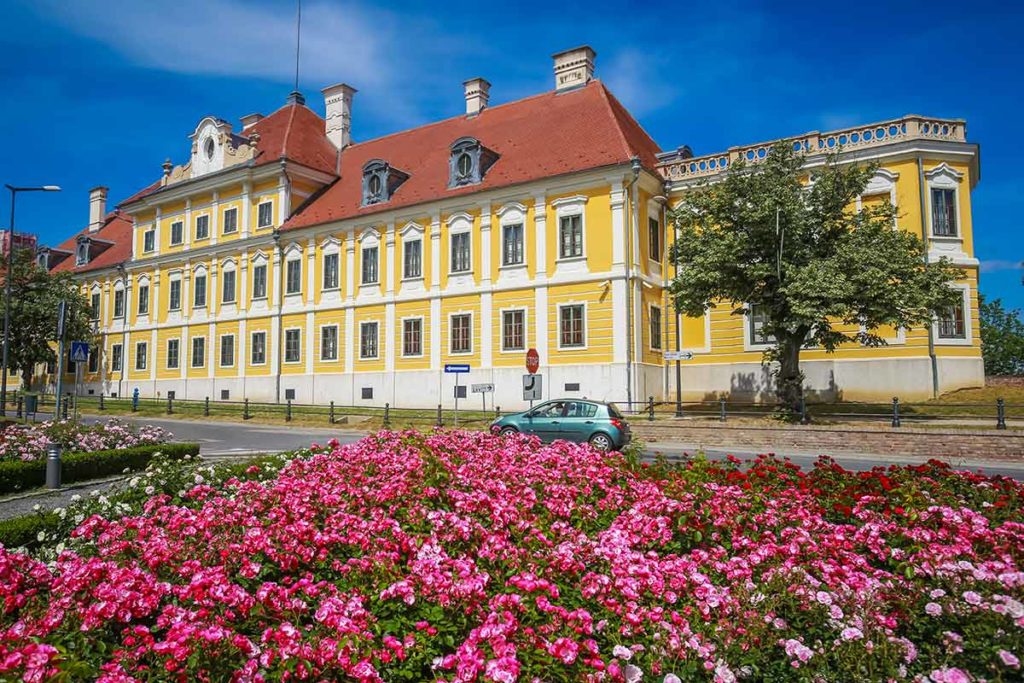
Many ports offer insights into the region’s war history but none as graphically as Vukovar in Croatia.
During the 19th century, steamships along the Danube connected Vukovar with Budapest, Vienna and Romania downstream.
Vukovar became a port where goods were imported and exported.
The city sits in a strategic position at the confluence of the Danube and Vuka Rivers and is Croatia’s biggest river port
During the 1991 Balkan War of Independence, which resulted in the break up of the former Yugoslavia, there was an 87-day siege in Vukovar.
The Battle of Vukovar was a protracted battle where rockets and shells were fired at the town.
Today, guides share stories about their personal war-survival experiences as you walk past bullet-ridden buildings.
The city has been rebuilding and attractions in Vukovar include the municipal museum in Elz Manor, Vučedol Culture Museum and Ovčara Memorial.
Danube River Cities in Germany
In Germany, the Danube river flows from the Black Forest into Bavaria’s spa and golfing regions before it reaches Upper Austria.
8- Regensburg (Germany)
Regensburg is the fourth largest city in Bavaria. Population:163 948.
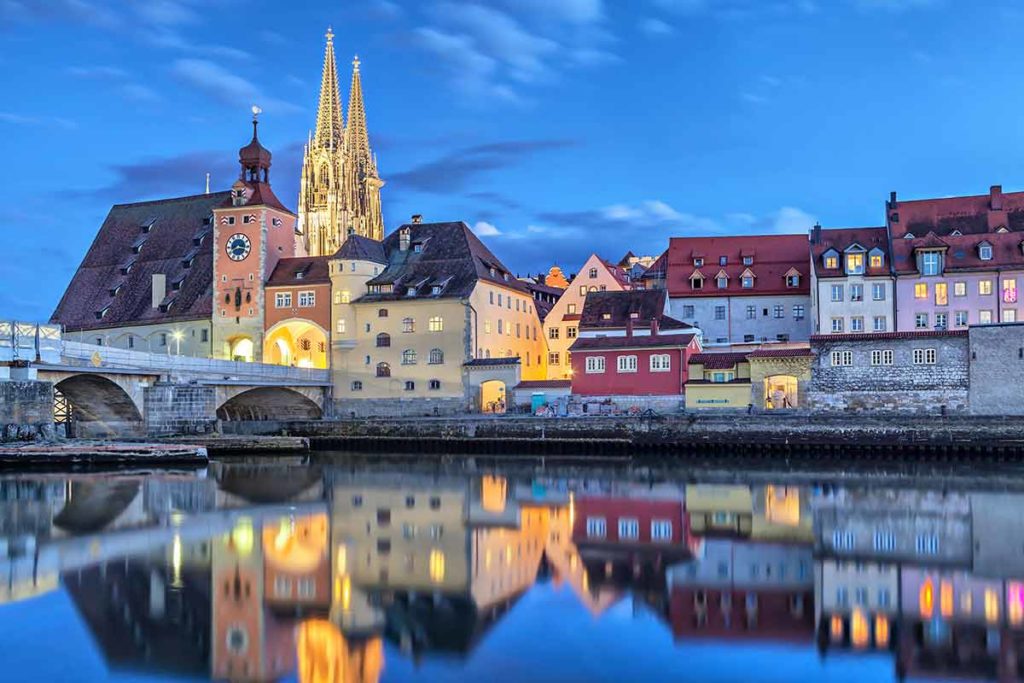
Located at the most northern bend of the Danube River, Regensburg is a UNESCO World Heritage city with a treasure trove of delights.
Being the only authentically preserved German medieval city makes it a place worth spending extra time.
Its history dates back 2000 years, with a golden age during the Middle Ages.
A stroll around the lanes of the old quarter reveals cobblestone streets, colourful houses, steeples and beautiful buildings like the old town hall, St. Peter’s Cathedral and courtyards.
Shops, boutiques and cafes occupy the Romanesque and Gothic buildings.
Regensburg’s ancient Stone Bridge is a landmark of Germany from the Middle Ages, a picturesque attraction popular with locals and visitors alike.
9- Passau (Germany)
Passau is a University town in Lower Bavaria. Population: 50,000.
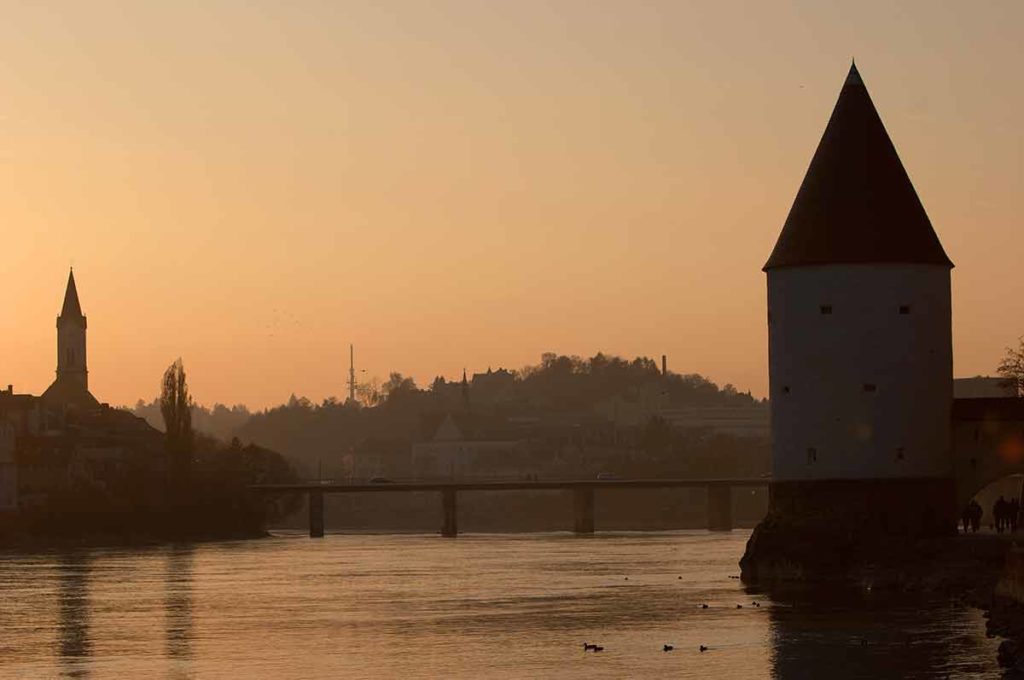
Known as the “Three Rivers City”, Passau sits at the confluence of three rivers, Inn, Ilz and Danube rivers on the border of Austria.
Attractions in Passau include 13th-century Veste Oberhaus fortress on the hill, home to a museum and observation tower.
Passau’s Old Town has lovely baroque architecture.
A highlight is St. Stephen’s Cathedral, with its domed towers and impressive 17,974 pipe organ.
10- Ingolstadt (Germany)
Ingolstadt is the fifth largest city in Bavaria. Population: 133,638.
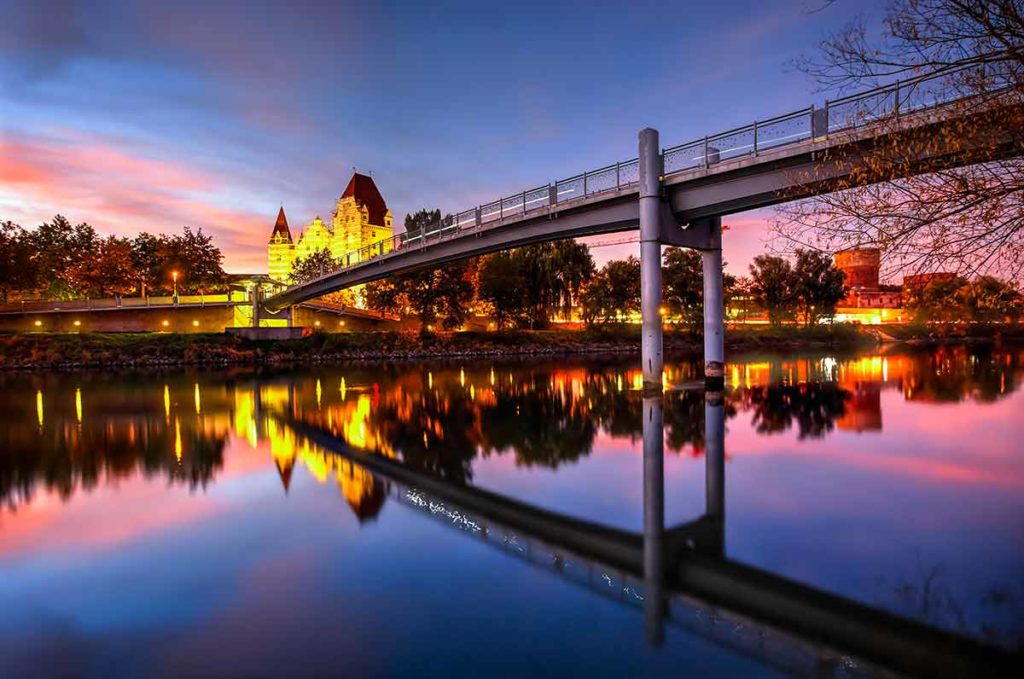
One of Ingolstadt’s claim to fame is the city is home to the luxury car manufacturer, Audi, and fans can visit the Audi Forum to learn about the cars and take a factory tour.
Ingolstadt’s collection of historic attractions are fascinating and include the Gothic Franciscan Basilica, which has 90 tombs of important residents buried from 1472 to 1800.
The Baroque Asam Church Maria de Victoria (built between 1732 and 1736), which is home to a famous ceiling fresco measuring 30 m by 15 m called “The Incarnation of the Lord” created by famous Bavarian Baroque artist Cosmas Damian Asam.
Other attractions are the German Museum of the History of Medicine, Ingolstadt’s 14th-century Town Hall and the 15th-century Neues Schloss home to the Bavarian Army Museum.
Danube River Cities in Hungary
11- Pecs (Hungary)
Pecs is the fifth largest city in Hungary. Population: 145,011.
The Hungarian city of Pecs (pronounced paych) in the heart of the Baranya wine-growing region is 200 kilometres south of Budapest.
In 2010, Pecs was one of the European Culture Capitals (along with Bremen in Germany and Istanbul in Turkey) and has a fascinating collection of Roman burial chambers, medieval churches, Ottoman mosques and grand buildings from the Austro-Hungarian era.
2000 years of Roman, Ottoman, German, Croatian and Hungarian culture makes Pecs a worthwhile place to explore.
Pecs has an intriguing blend of attractions from the Roman times (dating back to AD400) as well as dreamy Ottoman buildings (circa 1543) and grand buildings that were left from the Austro-Hungarian Empire
Pecs has some wonderful museums, most are on Kaptalan Street, including a museum showcasing the post-impressionist art of one of Hungary’s greatest artists – Tivadar Csontvary Kosztka (1853 to 1919).
12- Budapest (Hungary)
Budapest is the capital of Hungary. Population: 1.756 million.
Until the late 19th century, the capital of Hungary, Budapest, consisted of two rival cities, Buda and Pest, located on opposite banks of the Danube River.
Hungary’s union with the Habsburg Empire enhanced Budapest’s Roman ruins and Ottoman Empire Turkish baths with palatial buildings and baroque churches to create an exotic cultural blend.
Heroes’ Square is an imposing Millenary Monument with its 36m-tall pillar and grand colonnades showcasing 14 statues of rulers and statesmen.
From Magyar King Stephen I to revolutionary leader Lajos Kossuth, these Hungarian heroes are immortalised in stone.
Gabriel the angel stands on top of the pillar holding the Hungarian crown and cross.
One of the highlights to experience in Budapest is its spa complexes and thermal baths, which are fed by water from natural hot springs with therapeutic properties.
Like Vienna, Budapest is known for its historic cafes, which are grandly decorated social hubs that serve sweet treats and excellent coffee.
For a magnificent view of the Danube, head to Fishermen’s Bastion or join a cruise on the river for fairytale views of Budapest’s Parliament, Royal Palace and bridges.
Fisherman’s Bastion was built in 1905 and named after the guild of fishermen who defended the wall during the Middle Ages.
The ornate neo-Gothic House of Parliament is a classic picture-postcard snapshot and one of Budapest’s most recognisable landmarks.
Danube River Cities in Moldova
Although Moldova is one of the smaller countries along the Danube, the river runs for around 340 m (1116 ft) through the country.
13- Ungheni (Moldova)
Ungheni is the seventh-largest city in Moldova. Population: 30,804
14- Comrat (Moldova)
Comrat is a Moldovian city and also the capital of the autonomous region of Gagauzia. Population: 20,113.
Also read:
- 100 Travel Quotes You Will Love
- 20 Quotes About Travel With Friends
- 100 Sunset Captions and Quotes
- 50 Inspiring Family Travel Quotes
- 70 Famous Mountain Quotes
- 120 Ocean Quotes
Danube River Cities in Romania
15- Bucharest (Romania)
Bucharest is the capital of Romania. Population: 1.836 million.
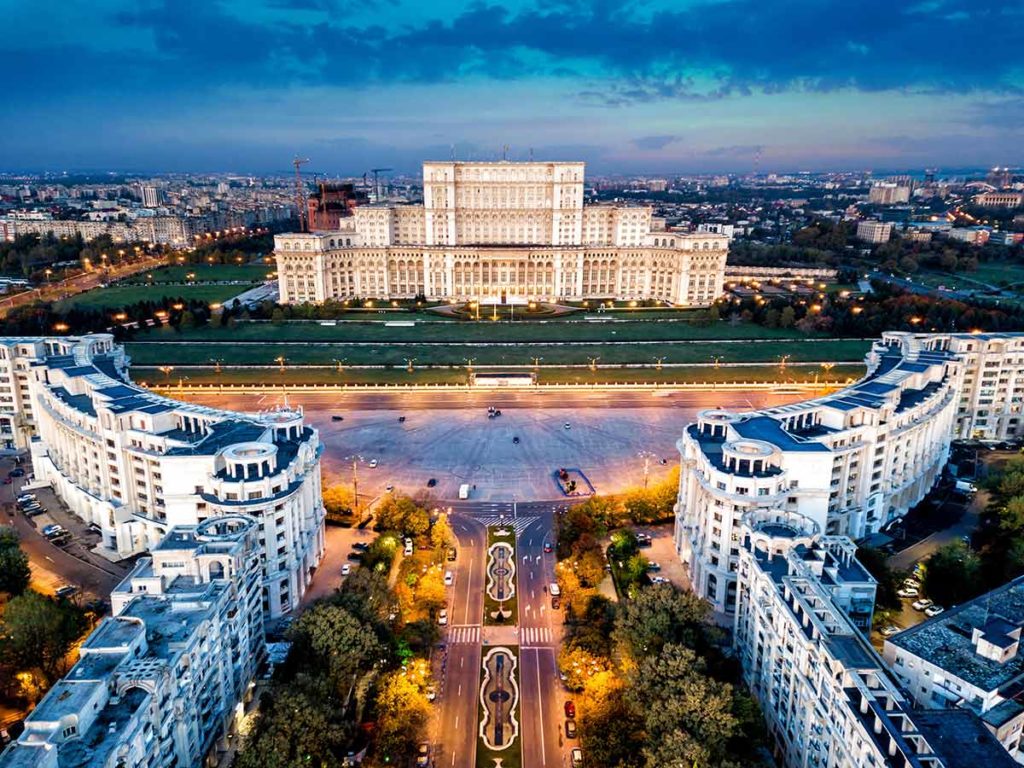
Bucharest is one of the most interesting of the larger Danube River cities.
As Budapest is located on the banks of the Dâmbovița River, which flows into a tributary of the Danube, cruise ships dock in Giurgiu in Romania and transport passengers by bus to Bucharest.
As you enter the city, glimpses of elegant French Baroque palaces flash by from behind rows of stark soviet multi-level housing blocks.
Visiting the Palace of Parliament, which is the second-largest building in the world (after the Pentagon), will make your jaw drop.
Romania’s communist dictator Nicolae Ceausescu razed one-sixth of Bucharest, 30,000 homes, to build this white elephant.
16- Iron Gates (Serbia/Romania)
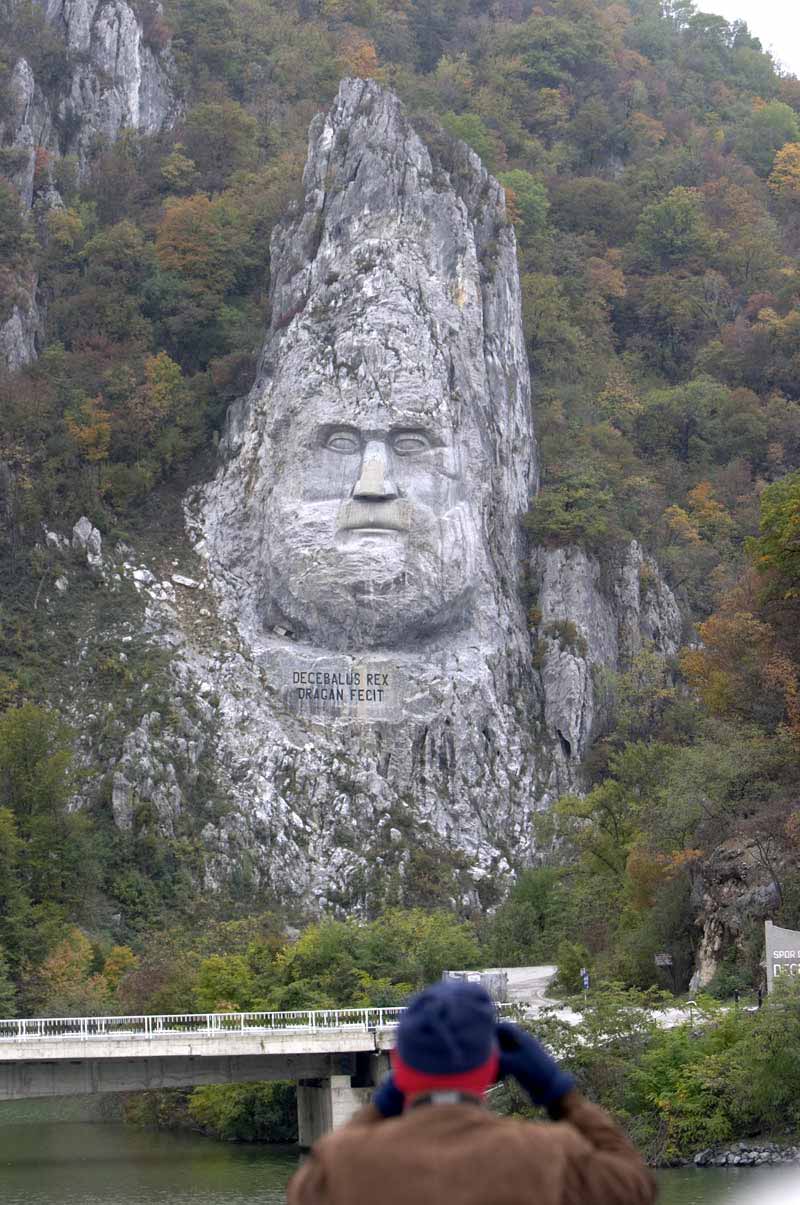
A light mist hangs above the trees casting a mysterious air over the southern Carpathian Mountains on one side of the river and the north-western foothills of the Balkan Mountains on the other.
This section of the river is known as the Iron Gates.
There’s plenty to see on both sides of the river and our tour director points out an ancient Roman plaque Tabula Traiana on the Serbian shore.
It’s a reminder of the Roman Empire’s victory over the Dacian kingdom in 105 AD.
There are oohs and ahhs as we cruise past Europe’s tallest rock sculpture, a soaring 40-metre rock carving of King Decebalus of Dacia whose stern expression is chiselled into the cliff face.
Decebalus held off two Roman Emperors before giving in and taking his own life.
On the Romanian bank, we pass the haunting Golubac Fortress.
The river laps at the base of the sturdy stone turrets which have withstood centuries of invasions.
17- Novi Sad (Serbia)
Novi Sad is a city in northern Serbia. Population: 289,128.
Novi Sad’s main attraction is the Petrovaradin Fortress where Europe’s coolest bands draw 50,000 visitors a day to the Exit summer music festival.
18- Belgrade (Serbia)
Belgrade is the capital of Serbia and former capital of Yugoslavia. Population: 1.374 million.
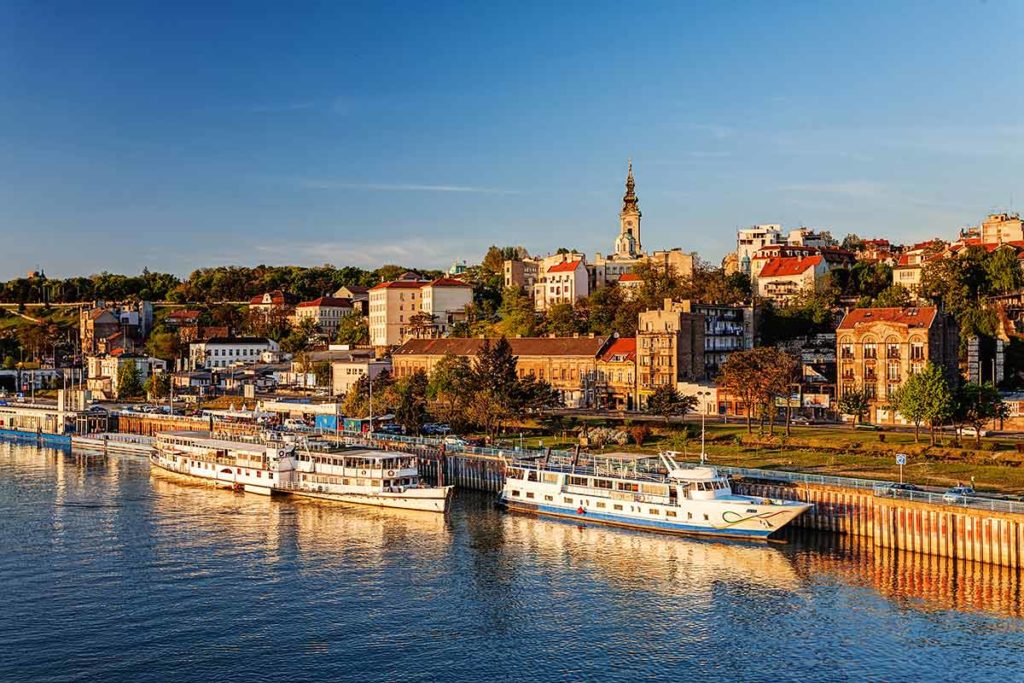
20 years ago in 1999, the former Yugoslavia regularly made world news as a war zone but these days symbols of capitalism are everywhere.
So it stands to reason The city at the confluence of the Sava and Danube Rivers has a fascinating war history.
But Belgrade is also a vibrant city with cafes, museums and shopping precincts.
Advertising billboards with glamorous high cheek-boned models push western cosmetics and chic boutiques sell the latest European fashions.
The best view of the Danube is from Kalemegdan fortress, which sits on a hill with a strategic vantage point of both rivers.
19- Bratislava (Slovakia)
Bratislava is Slovakia’s capital city. Population: 424,428.
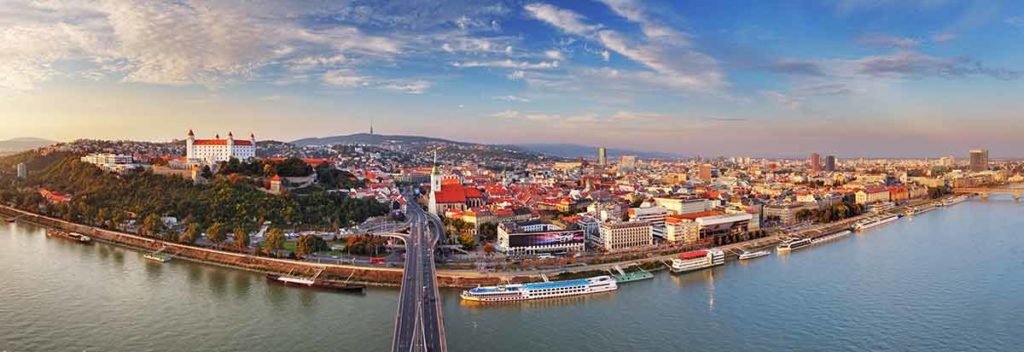
Slovakia’s capital city is small compared to other European capitals but it’s the largest city in Slovakia.
20- Izmail (Ukraine)
Izmail is a historic city in the south-west of Ukraine. Population: 72,471.
If you enjoyed reading about seeing the Danube River cities, you might like to see Europe’s mountains too. Read this post about the Jungfrau Railway Experience in Switzerland. Another way to visit some of the wonderful cities on your European bucket list is to cycle the Danube River. The most popular section to bike it is in Germany and Austria, between Passau and Vienna.
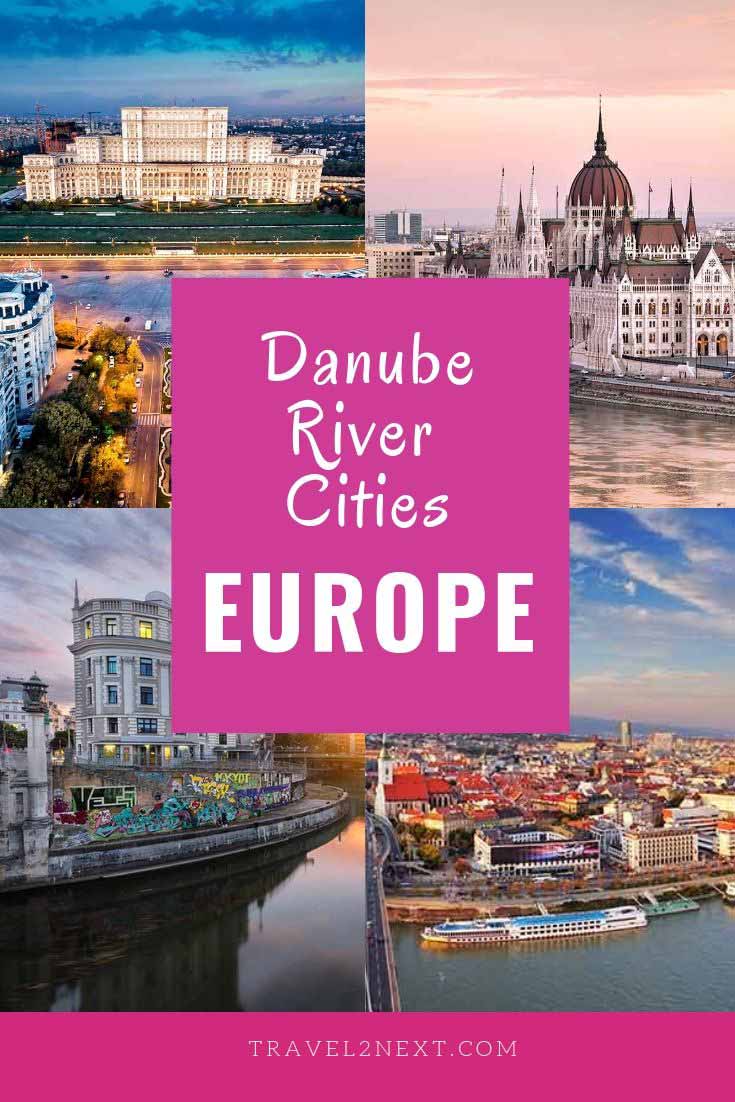
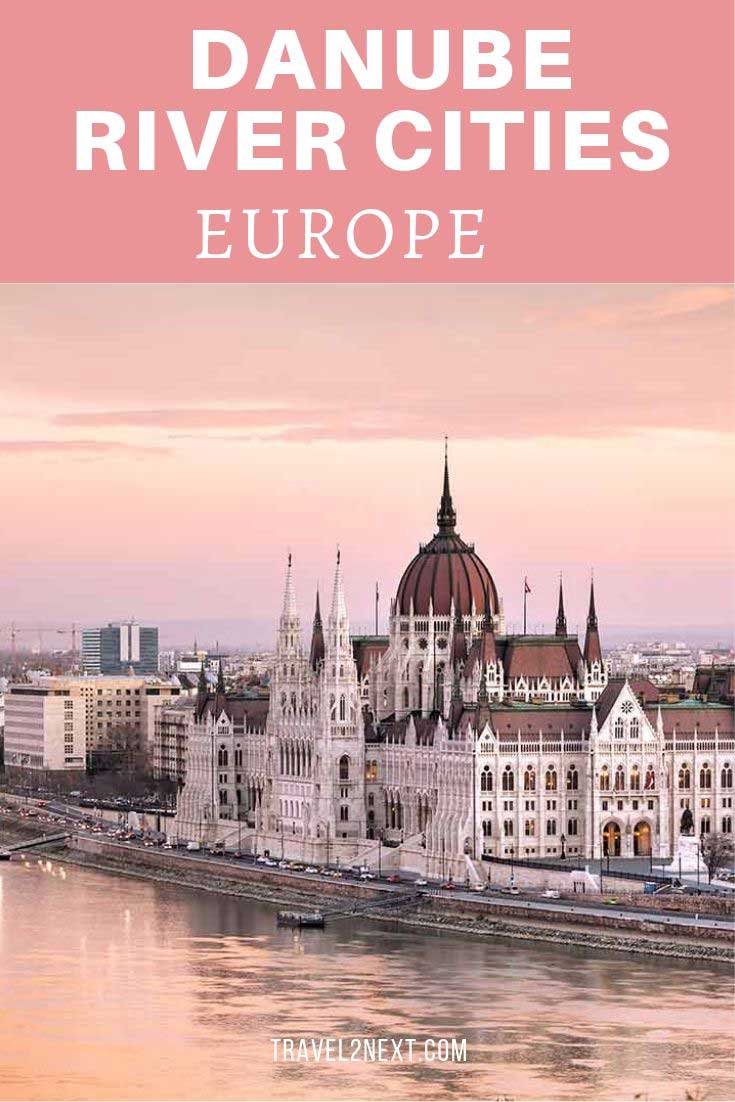
Plan Your Trip

Rent A Car – Find the best car rental rates at Discover Cars. They compare car hire companies to provide you with the best deal right now.

Find A Hotel – If you’re curious about this article and are looking for somewhere to stay, take a look at these amazing hotels.
